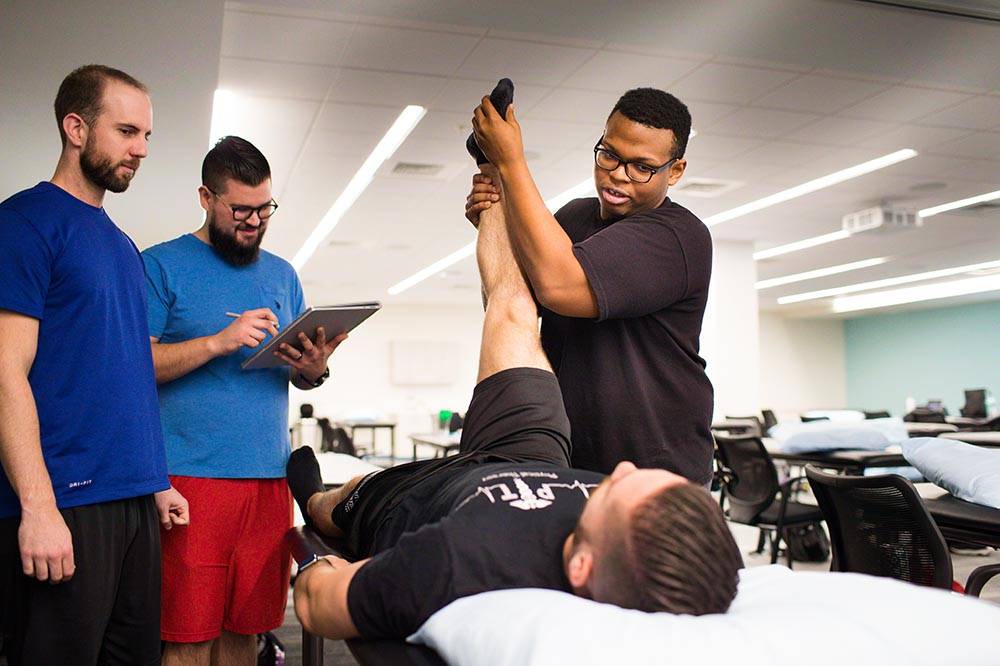Physical therapists are professionals who help people with physical problems, like arthritis, back pain, and neck pain.
They work with patients to help them get better. And they use different types of treatments, like exercise, stretches, hot packs, and massage. Also, physical therapists work with people who have diseases, like cancer, to help them become more comfortable and live better lives. If you’re thinking about getting a physical therapist for yourself or a loved one, this guide will help you find the best one. It covers things like what physical therapists do, how to find them, and what to look for when choosing a therapist.
Contents
Who is a Physical Therapist?

Physical therapists are specially trained professionals who work with people who have physical problems. They can help people with things like back pain, arthritis, and sports injuries.
There are a few things that Physical Therapists must have to practice. They must have a doctorate in physical therapy from an accredited school. They must also pass a licensing exam. After getting their license, they must then complete at least 2 years of supervised clinical experience.
What Does a Physical Therapist Do?
Physical therapists are specialists that help restore mobility and function to people who have suffered a physical injury or illness. They use a variety of treatments, including exercise, stretches, and counseling.
Physical therapists work with patients in their homes or clinics. They typically have a degree in physical therapy from an accredited college or university. Physical therapists must pass an exam to become licensed in the state they work in. After they are licensed, they can continue to learn new techniques and pass exams to stay current on their knowledge.
The responsibilities of a physical therapist include:
Assessing the patient’s current level of mobility and function.
One of the main goals of physical therapy is to help the patient achieve as much independence as possible. Physical therapists will work with the patient to develop a treatment plan that includes specific exercises, stretches, and counseling interventions.
Helping the patient to regain their mobility and function.
Physical therapists will use a variety of treatments, including exercise, stretches, and counseling, to help the patient regain their mobility and function. Treatment plans may include one or more sessions per week.
Developing a treatment plan that includes specific exercises, stretches, and counseling.
Sometimes physical therapists will prescribe specific exercises or stretches that the patient can do at home. Other times, they may suggest counseling interventions that the patient can attend in a clinic. Physical therapists will work with the patient to develop a treatment plan that is specific to their needs and goals.
Regularly passing an exam to stay up-to-date on their knowledge.
Physical therapists must pass an exam to maintain their licenses. This exam covers the basics of physical therapy, including assessment and treatment of mobility and function issues. Physical therapists who maintain their licenses are expected to keep up with new techniques and knowledge in the field.
Teaching the patient how to do the exercises and stretches.
Sometimes physical therapists will assign patient-specific exercises to do at home. Other times, they may provide instructions on how to do the exercises on their own. Physical therapists want the patient to be able to do the exercises on their own so that they can maintain independence.
Monitoring the patient’s progress and providing feedback.
Sometimes physical therapists will give the patient-specific goals to work towards. Other times, they will provide feedback on how the patient is doing on a daily or weekly basis. Physical therapists want to ensure that the patient is making progress and that their treatment plan is working as intended.
Types of Physical Therapists

There are different types of physical therapists and they have their specific areas of expertise. Some specialize in sports physical therapy, orthopedics, neurology, or pediatrics.
To find a qualified therapist who is right for you, it’s important to understand the various types of PTs. Here is a look at the main types of PTs:
Manual Physical Therapists
This is one of the types of physical therapists that focuses on rehabilitation through manual therapy techniques. Manual therapists use their hands to help patients with a range of motion, flexibility, and strengthening exercises.
Strengthening Manual Therapists
This type of therapist helps patients with specific muscles in their body by using various resistance exercises. Strengthening manual therapists work with patients on a one-to-one basis to help them get stronger and more flexible.
Sports Physical Therapists
Sports physical therapists are highly skilled in helping people with injuries. They can help patients recover from sports-related injuries such as sprains, strains, and fractures. Sports physical therapists also work with athletes who are preparing for or recovering from athletic competitions.
Orthopedic Physical Therapists
Orthopedic physical therapists work with people who have orthopedic injuries, including those who have suffered a broken bone or joint. Also, Orthopedic physical therapists help patients regain strength and mobility in their injured areas. They may also prescribe surgery if necessary.
Occupational Therapists
Another type of therapist is an occupational therapist. Occupational therapists help people with disabilities to re-enter the workforce or improve their quality of life. They may work with people who have physical or mental disabilities, including those who have autism spectrum disorders and intellectual disabilities.
Pediatric Physical Therapists
Pediatric physical therapists work with children and adolescents who have physical or developmental disabilities. They help these patients improve their balance, coordination, and strength. Pediatric physical therapists may also prescribe exercises and therapies to help these patients reach their full potential.
How to Find a Good Physical Therapist?

If you are looking for a physical therapist, there are many factors to consider. Here are some tips on how to find a good therapist:
1. Ask your friends or colleagues for recommendations. Many people have had positive experiences with therapists they know and trust. Some of these people may be physical therapists themselves.
2. Check out online directories or search engines. These can help you find physical therapists who specialize in a particular area, such as sports therapy or pediatric therapy.
3. Ask your health insurance company for a list of physical therapists in your area. Many insurers offer rewards to patients who use physical therapists in their network, so it may be worth asking about this option if you are unsure whom to choose.
4. Ask your doctor if he or she has any recommendations. Many doctors are familiar with the work of physical therapists and may have had positive experiences with one in the past. When looking for a therapist, it is important to find someone you can trust.
5. Visit physical therapist offices in person. This is the best way to get a sense of how physical therapist practices and to find someone who is a good fit for you.
What To Expect from a Physical Therapist Session?
Physical Therapist Sessions typically last around 50-60 minutes and cover areas such as:
Assessment
One of the first steps in a physical therapy session is an assessment. During the assessment, you and your physical therapist will discuss your medical history, areas of concern, current symptoms, and goals for treatment.
These assessments help physical therapists better understand your condition and develop a plan of action tailored to meet your individual needs.
Exercises
Your physical therapist will then prescribe exercises and stretches that are designed to improve strength, flexibility, balance, coordination, and range of motion. Your physical therapist may also provide advice on lifestyle modifications that can help support the healing process.
Manual Therapy Techniques
In addition to exercise, many physical therapists use manual techniques such as massage or joint mobilization to assist with pain relief or injury recovery. These techniques work by increasing circulation to stiff or sore areas of the body while helping restore movement and function.
Education
Your physical therapist will provide education about self-care movements and how to minimize the risk of re-injury. They will also help you understand how to take care of your body and provide tips on healthy lifestyle changes that can support healing and promote better overall health.
Follow Up Care
After each session, your physical therapist may provide home exercises, activities, or advice regarding self-care techniques. You should follow their advice carefully to get the most out of the treatment plan they have created for you. Additionally, many physical therapists recommend follow-up visits after a certain amount of time to track progress and ensure goals are being met promptly.
Specialized Equipment
Also depending on the injury or ailment, your physical therapist may use specialized equipment such as ultrasound machines, electrical stimulation, and cold packs to help relieve pain and promote healing. Your physical therapist will discuss which treatment options are best for you based on your individual needs.
No matter which type of treatment plan you follow, it is important to remember that physical therapy can be a challenging but rewarding journey. With patience, dedication, and the guidance of a qualified professional, you can get back to doing the things that make life enjoyable.
Qualities of Physical Therapist

There are many qualities of a successful physical therapist.
First and foremost, physical therapists must be compassionate and understanding of their patient’s needs. They should also possess strong problem-solving skills to determine the best course of treatment for each individual to get them back to optimal health.
Physical therapists need excellent communication skills to effectively convey information between medical teams, as well as provide patient education on how to care for themselves in between appointments. Additionally, they need good listening skills so that they can understand what their patients are feeling and any concerns that they may have.
To perform treatments correctly, physical therapists must have a strong knowledge base in anatomy, kinesiology (the study of human movement), and pathology (disease processes). They must also be well-versed in biomechanics (the application of mechanical principles to study human movement) and pharmacology (the use of medications used to treat disease).
Finally, physical therapists need to be able to work with people from diverse backgrounds by respecting their beliefs and finding ways to help them that fit into those beliefs. It’s important for them to be patient, have strong interpersonal skills, and empathize with their patients.
By possessing these qualities, a physical therapist can successfully help others find relief from pain or disability.
Conclusion
Physical therapy is a rewarding career that allows you to help people recover from injuries, improve their mobility, and lead healthier lives. To become a physical therapist, you must earn a doctoral degree in physical therapy, pass the National Physical Therapy Examination (NPTE), and obtain a state license. In addition, you must have excellent communication skills, great problem-solving abilities, and an unwavering commitment to improving the quality of life for your patients. With dedication and hard work, you can reach your goal of becoming a physical therapist and make a positive impact on those seeking relief from pain or illness.
Physical Therapy help patients recover from pain. If you’re experiencing Back pain, Shoulder pain, Knee pain, Neck pain, Elbow pain, Hip pain, or Arthritis pain, a physical therapist at MantraCare can help: Book a physiotherapy session.


